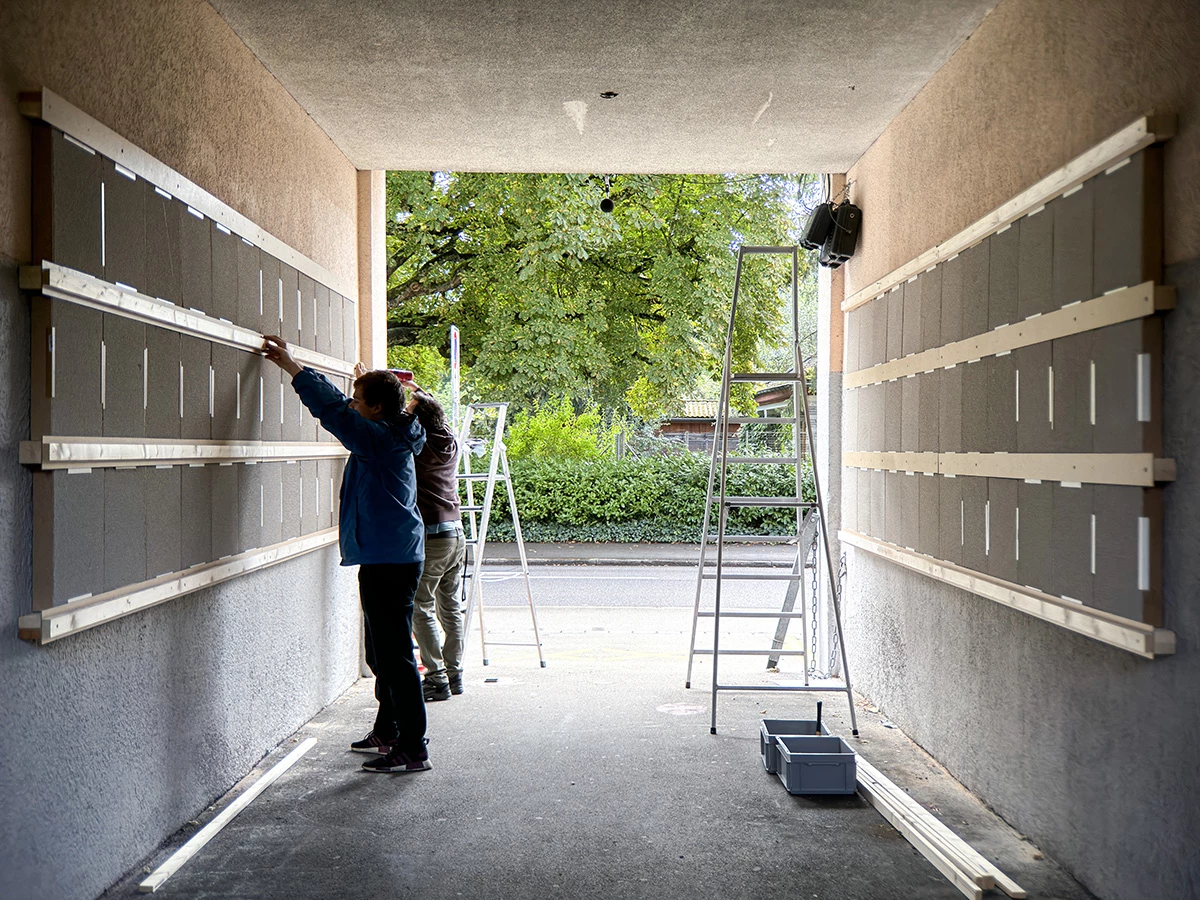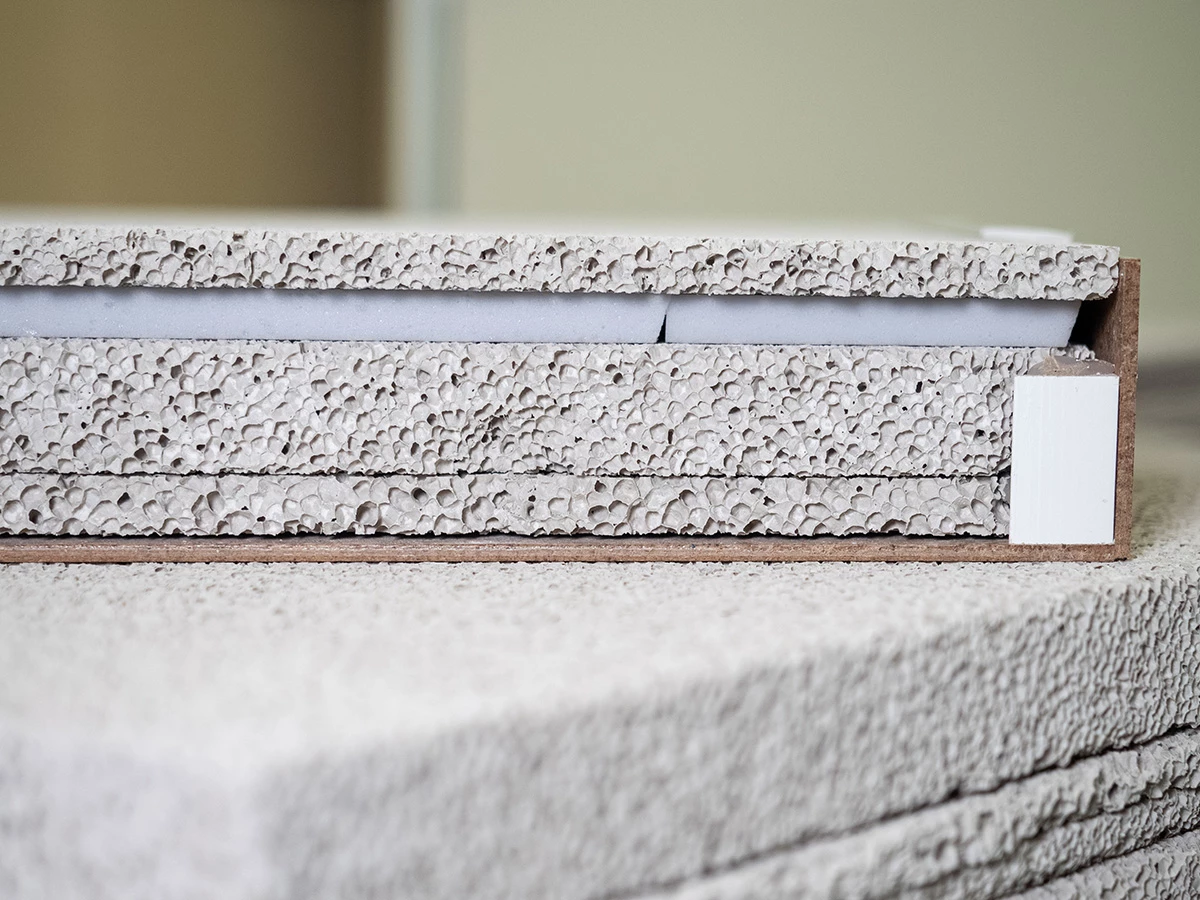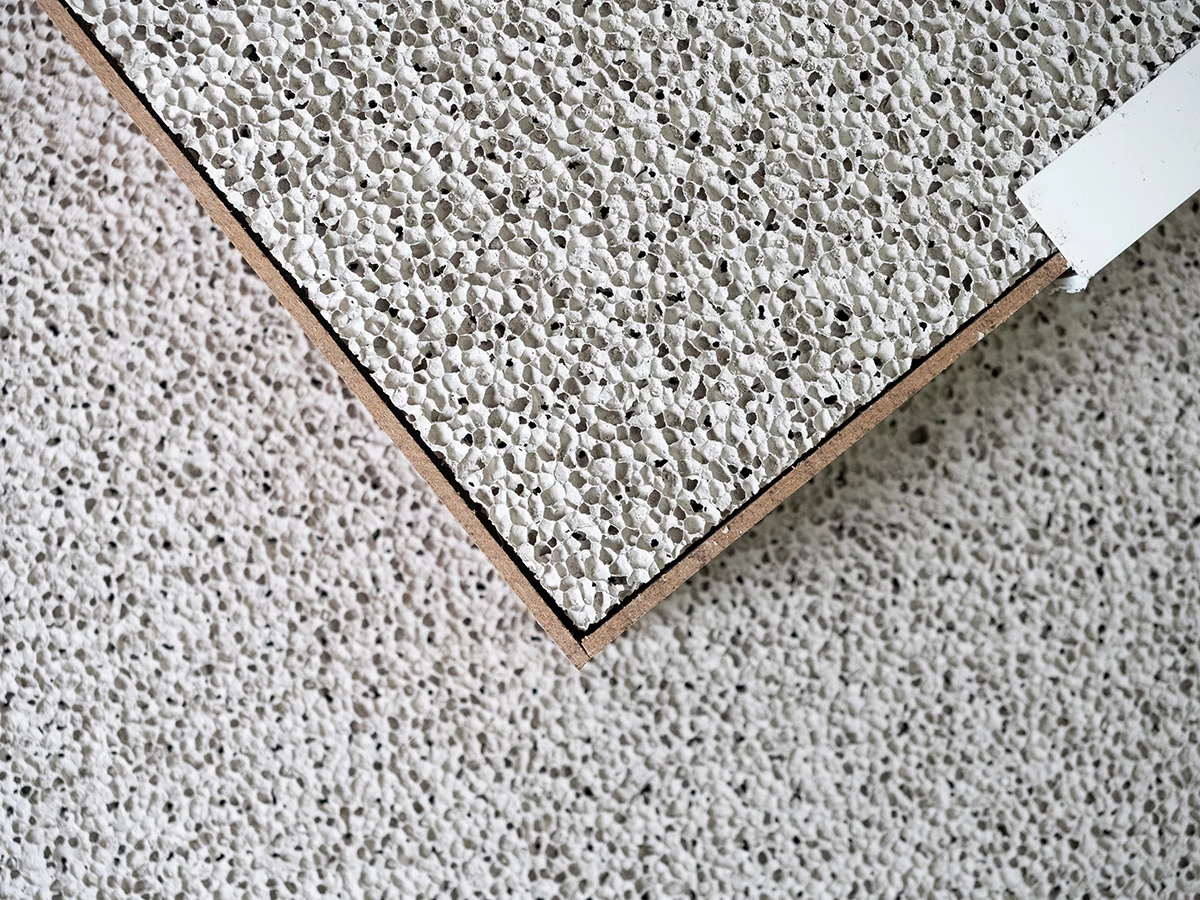If you live in a noisy urban area, you're gonna love the sound of this. Researchers in Switzerland have developed a material that can dampen street noise while being four times thinner than similar-performing absorbers used in construction.
This new material from the Acoustics/Noise Reduction lab at the Swiss Federal Laboratories for Materials Science and Technology (EMPA) institute in Dübendorf doesn't yet appear to have a name.
But beyond its ultra-thin profile, it has a neat trick up its sleeve: it can be can be tuned to specific frequency ranges, depending on what's causing a din outside, and what kind of space it's being installed in.
It's essentially a mineral gypsum or cement foam that's specially produced to have pores of different sizes, and it's packed in multiple thin layers to create more variation.
“The varying pore structure of the mineral foams forces air particles to take a longer route to get into the material and out again. Despite the low thickness, this creates the impression of a much thicker absorber for the sound waves,” EMPA researcher Bart Van Damme explained.
Using a numerical model, the researchers can “simulate and even specifically influence the acoustic behavior of the entire material by varying pore size, perforation and layer structure.”

The team tested this new material by fitting enough 2.1-inch (5.5-cm)-thick panels to cover about 130 sq ft (12 sq m) of a driveway in Zurich, where one end opens out on a public street and the other opens into a courtyard. The panels helped reduce traffic noise by 4 decibels, and was particularly effective at dampening the sound of cars approaching or leaving the driveway.
A significantly thinner sound absorption material like this allows builders and architects greater flexibility in designing and constructing living spaces, since they don't gobble up as many inches as traditional insulation materials.

The material's pore size, perforation, and layer structure can also be varied to change its acoustic behavior to suit different kinds of spaces – like stairwells, offices, large halls, and classrooms.
What's more, it's weatherproof, fireproof, and recyclable, making it a versatile choice for indoor and outdoor use.

That said, the material isn't yet perfect in its current form. It's not as performant at quietening high frequencies as rock wool, and the perforation process is presently done by hand and therefore labor-intensive. To address the latter, the EMPA team's next step will be to streamline mass production. It's already collaborating with Swiss material maker De Cavis on this material, so hopefully it will be able to help make the world a little less noisy soon enough.
Source: EMPA




